Efficiently managing and allocating workforce resources is essential for businesses to meet operational needs, ensure continuous coverage, and optimize work processes. One effective tool that can help achieve these goals is an employee shift schedule.
This article will explore what an employee shift schedule is, why it is beneficial for businesses, how to create and use one, examples of different shift schedules, and tips for successful implementation.
What is an Employee Shift Schedule?
An employee shift schedule is a document that outlines the specific shifts and work hours for employees within a business or organization. It provides a clear and organized way to assign and track employee shifts, ensuring that all necessary tasks are covered and that adequate staffing is always available.
This schedule can be printed out and displayed in a visible location for easy reference.
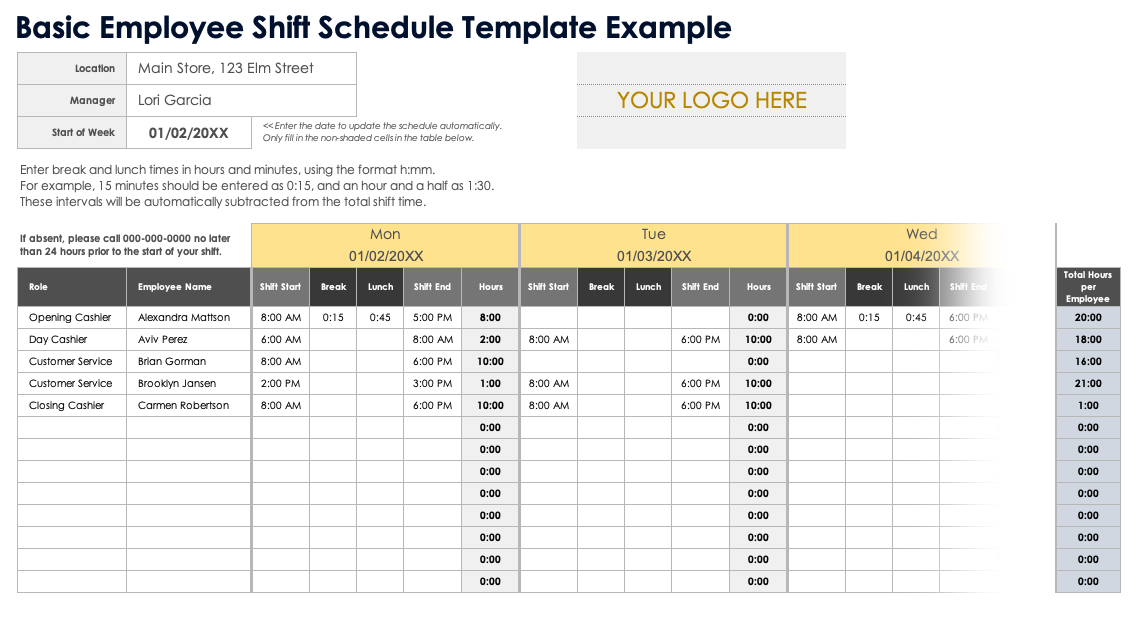
Why Use an Employee Shift Schedule?
There are several benefits to using an employee shift schedule:
- Efficient Resource Allocation: By using a shift schedule, businesses can accurately allocate their workforce resources based on operational needs. This ensures that there are enough employees scheduled to handle the workload during peak hours and that resources are not wasted during slower periods.
- Continuous Coverage: With a shift schedule, businesses can ensure that there is continuous coverage throughout the day, week, or month. This means that there are always employees available to handle customer inquiries, complete tasks, and maintain operations, even during holidays or weekends.
- Optimized Work Processes: A shift schedule allows businesses to optimize their work processes by assigning employees with specific skills or expertise to the appropriate shifts. This ensures that tasks are completed efficiently and that employees are working in roles that align with their strengths.
How to Create and Use an Employee Shift Schedule
Creating and using an employee shift schedule is a straightforward process. Follow these steps:
1. Assess Operational Needs:
Start by assessing the operational needs of your business. Consider factors such as peak hours, customer demands, and specific tasks that need to be completed. This will help you determine how many employees you need for each shift and what skills or qualifications are necessary.
2. Determine Shift Length and Rotation:
Next, decide on the length of each shift and the rotation pattern. Common shift lengths include 8 hours, 10 hours, or 12 hours. Decide if you want to use a fixed shift schedule or a rotating schedule, where employees work different shifts on different days.
3. Assign Employees to Shifts:
Assign employees to specific shifts based on their availability, preferences, and skills. Consider any time-off requests or scheduling constraints when making these assignments. Ensure that each shift has the appropriate number of employees to handle the workload.
4. Create the Schedule:
Using a spreadsheet or scheduling software, create an employee shift schedule. Include the date, day of the week, shift start and end times, and the names of the employees scheduled for each shift. Make sure the schedule is clear and easy to read.
5. Communicate the Schedule:
Once the schedule is created, communicate it to your employees. Make sure they understand their assigned shifts and any expectations or requirements. Display the schedule in a visible location or distribute it electronically for easy access.
6. Monitor and Adjust:
Regularly monitor the effectiveness of the shift schedule and make adjustments as needed. Take into account employee feedback, customer demands, and any changes in operational needs. This will ensure that the schedule continues to meet the needs of the business and its employees.
Examples of Employee Shift Schedules
There are several types of shift schedules that businesses can use, depending on their operational needs. Here are a few examples:
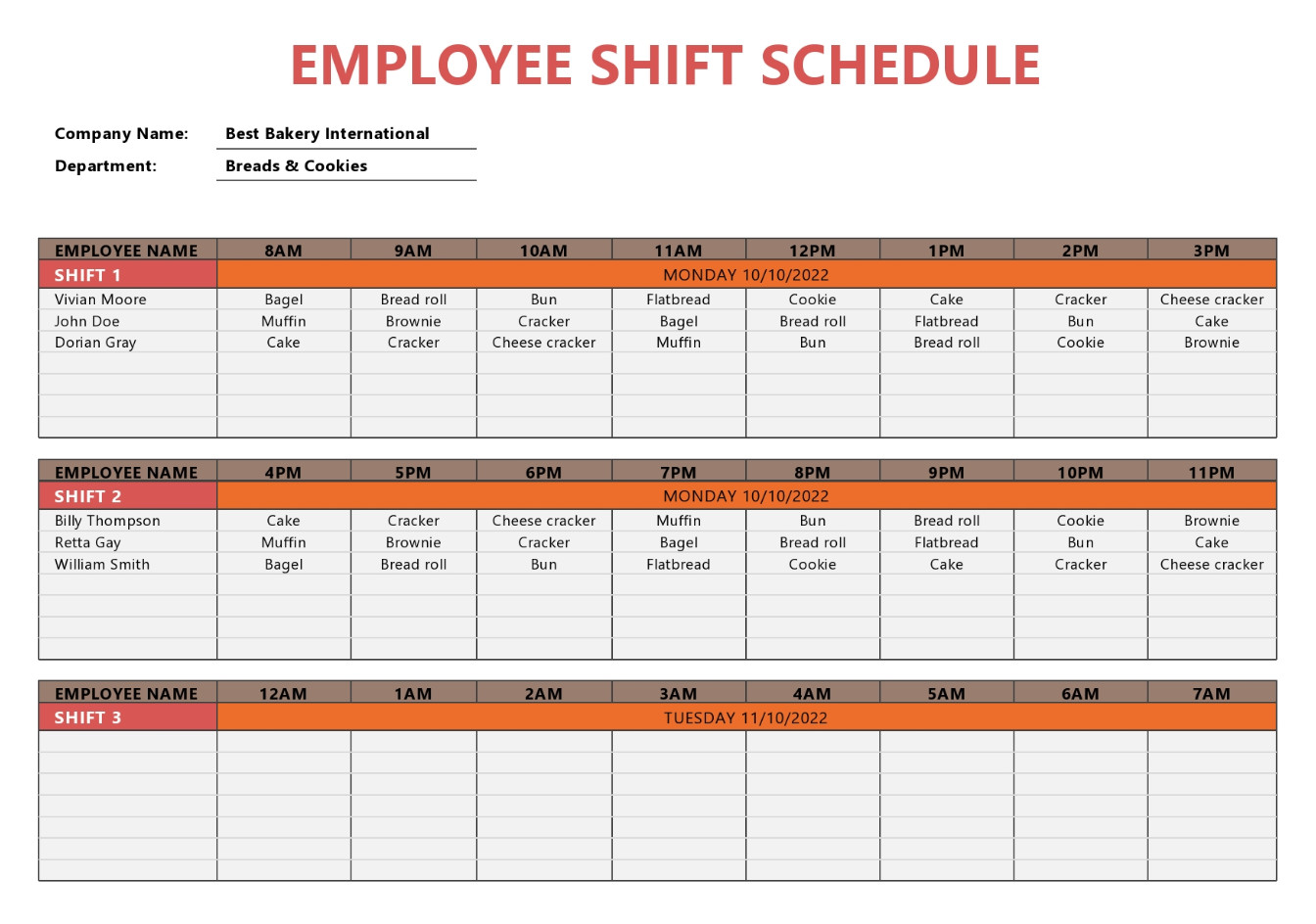
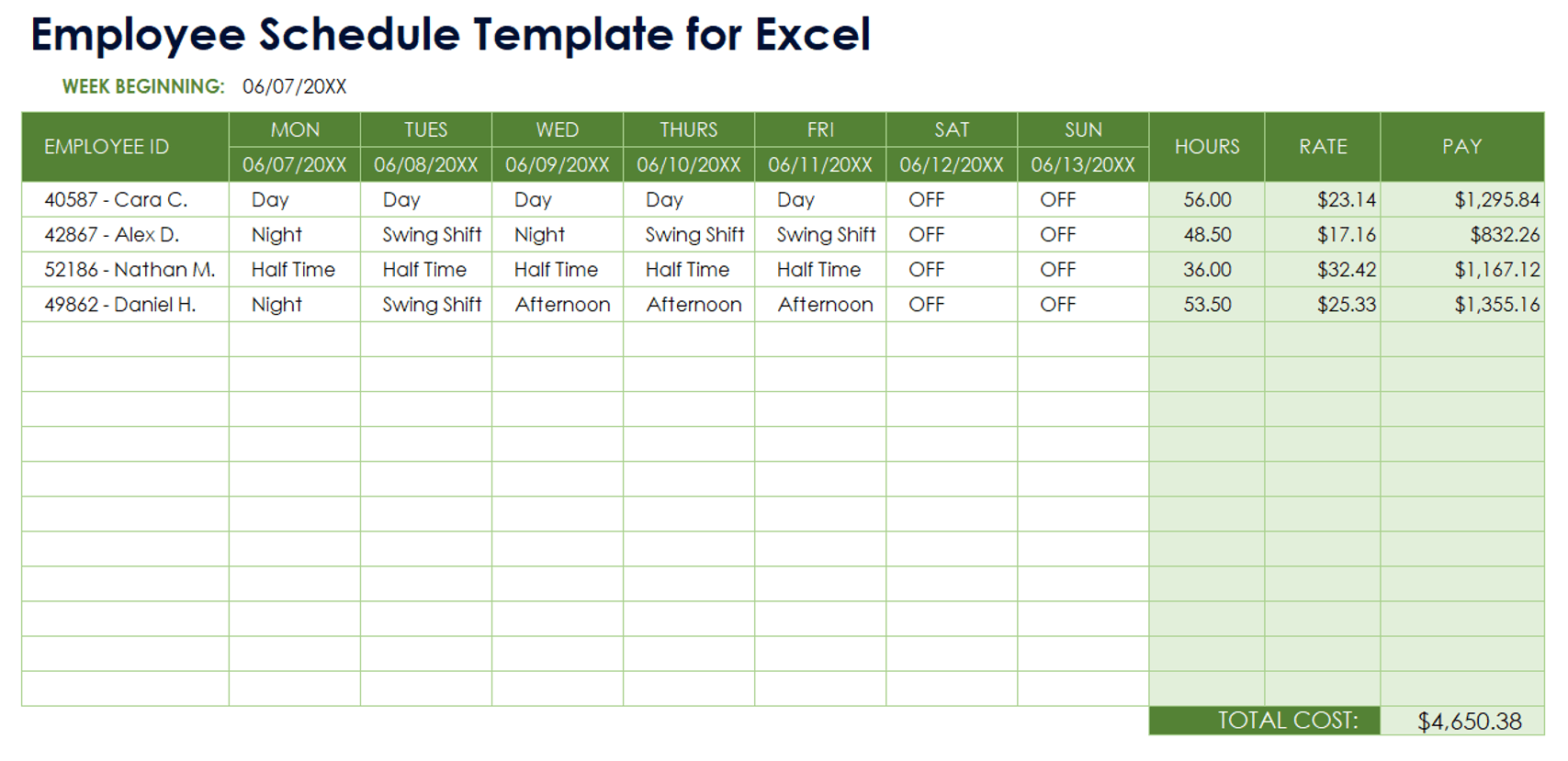
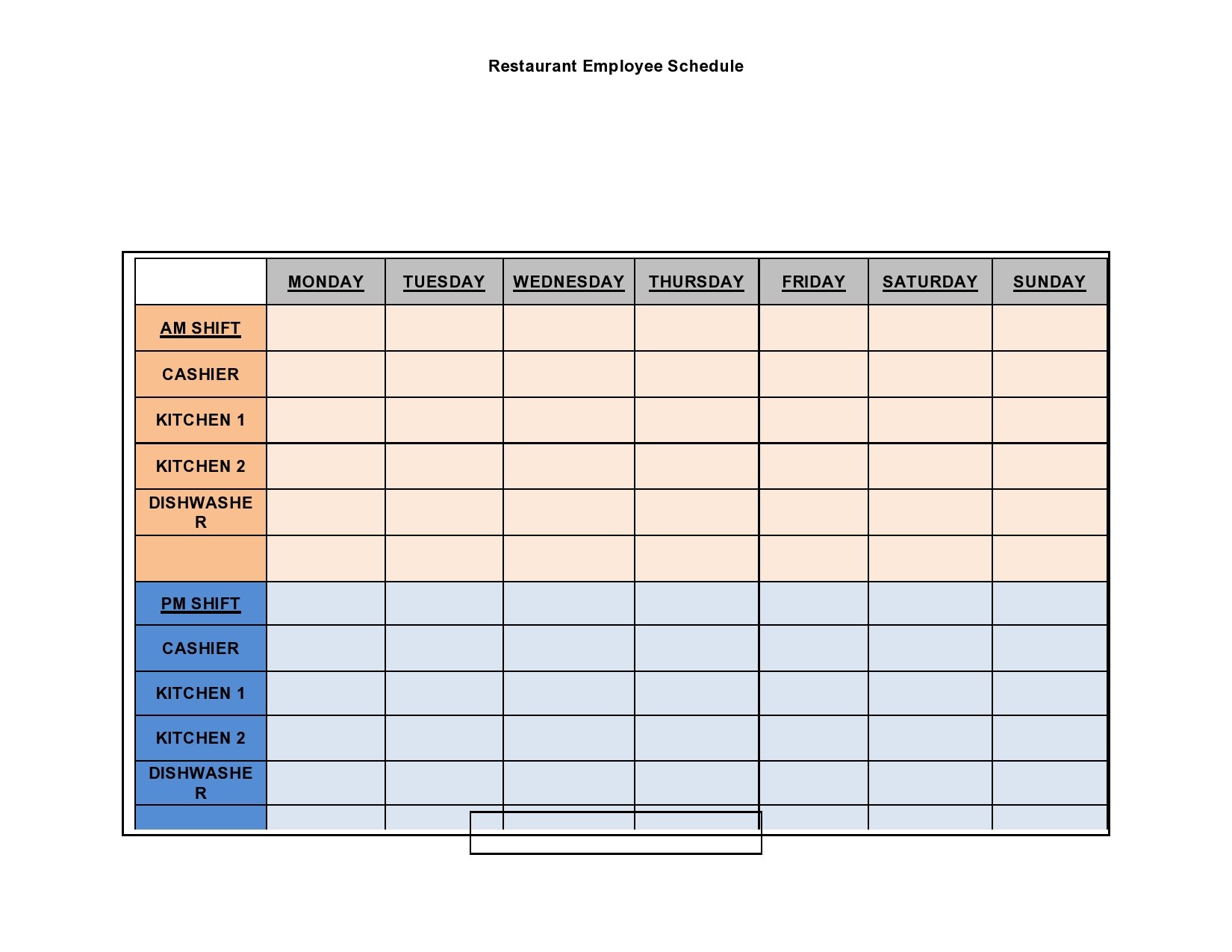
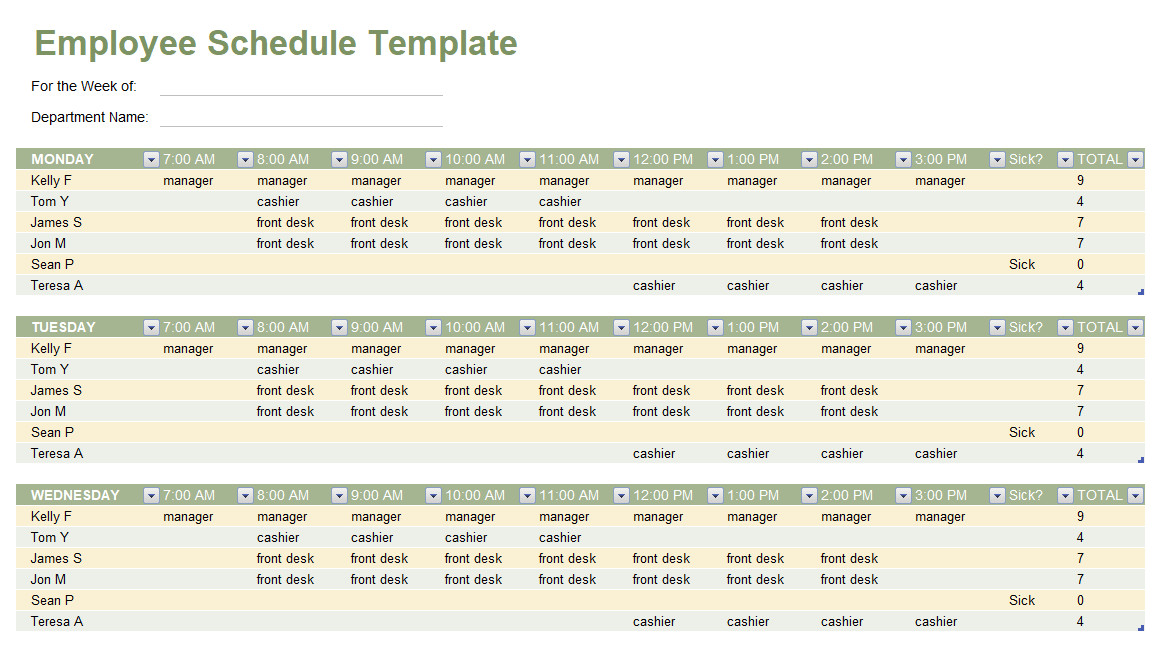
Tips for Successful Implementation
Implementing an employee shift schedule effectively requires careful planning and consideration. Here are some tips to help you succeed:
- Involve Employees: Seek input from your employees when creating the shift schedule. Consider their preferences, availability, and any scheduling constraints. This will help increase employee satisfaction and engagement.
- Use Scheduling Software: Consider using scheduling software or apps to streamline the scheduling process. These tools can automate shift assignments, track employee availability, and generate schedules.
- Be Flexible: Recognize that schedules may need to be adjusted from time to time to accommodate unforeseen circumstances or changing operational needs. Be open to making changes and communicate them clearly to your employees.
- Provide Adequate Notice: Give your employees sufficient notice of their assigned shifts. This will allow them to plan their personal lives around their work schedule and make any necessary arrangements.
- Regularly Review and Update: Regularly review the effectiveness of the shift schedule and make updates as needed. Seek feedback from your employees and make adjustments to improve overall efficiency and employee satisfaction.
- Consider Employee Preferences: Whenever possible, take into account employee preferences when assigning shifts. This can help increase employee satisfaction and create a positive work environment.
- Communicate Clearly: Ensure that your employees understand the shift schedule and any expectations or requirements. Communicate any changes or updates to the schedule to avoid confusion or misunderstandings.
- Monitor Employee Workload: Keep track of each employee’s workload to ensure that it is balanced and manageable. Avoid overloading employees with too many shifts or tasks, as this can lead to burnout and decreased productivity.
Conclusion
An employee shift schedule is a valuable tool for businesses to efficiently manage and allocate workforce resources. By using a shift schedule, businesses can ensure continuous coverage, optimize work processes, and meet operational needs.
By following the steps outlined in this article and implementing the tips provided, businesses can create and use an effective employee shift schedule that benefits both the business and its employees.
Employee Shift Schedule Template – Download